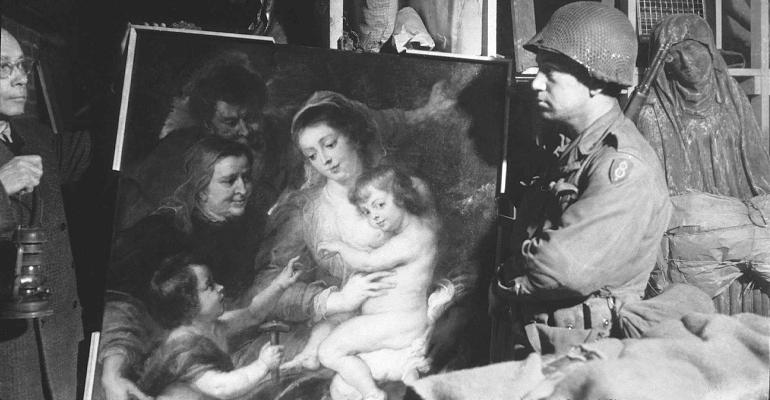Investing in art is about more than flipping works for a quick profit, especially today when the risks are dramatized in one scandal after another. Buying a beautiful painting, unique antiquity, or culturally significant object can yield personal, aesthetic and financial returns.
But the art market—with its price volatility, lack of regulation, high levels of secrecy, and need for reliable expertise—exposes buyers to a number of risks. Some are well-known; for example, nobody wants to acquire a fake or forgery, and we have recently seen dozens of investors lose millions on artwork that turned out to be worthless forgeries. Other risks are less clear. So, how can investors avoid the pitfalls when looking to expand their collections?
The No. 1 rule is to be careful: Do your due diligence. Whatever the problem, developing an object’s provenance or history of ownership and possession is at the heart of any solution. Due diligence means asking questions that probe the seller for information and documents—we want to stress the importance of documents—and conducting independent research into the history of a piece. The art market has long thrived on self-serving pronouncements of self-appointed experts and, as a result, has been able to trade poorly documented objects with dubious pasts.
The No. 2 rule: if something about the seller, the work or the transaction seems suspicious, walk away.
Three categories of objects—antiquities, works with ties to World War II and Holocaust, and American Indian artifacts—merit special attention.
Antiquities
Authenticity is of paramount importance when collecting antiquities, as is the provenience (or “find spot”) of an object and date of export from the source country. While no approach guarantees that you are looking at a legally acquired antiquity, particularly in an era where much of the world seems embroiled in armed conflict, these safeguards can help:
- Document the ownership history, particularly if the object comes from a collection formed after 1970.1 Investigating the exhibition and publication history of the object, may help establish provenance.
- Acquire antiquities only from reputable sellers; an antiquity offered for sale by a dealer specializing in Old Master paintings raises a red flag. Steer clear of unknown dealers and online sales.
- Many source countries have asserted ownership over all antiquities and permit the export of antiquities only with express governmental authority. Some countries have agreements with the U.S. to limit trade of certain types of antiquities. Check import and export documents to ascertain whether the artifact left the source country and entered the U.S. legally. Make sure the seller’s paperwork satisfies those requirements. Establishing the date of export can be critical to see what laws apply.
- Beware of objects that likely came from conflict zones such as Syria and Iraq.
World War II Era Works
Collectors of pre-1933 artworks, such as impressionist and modern works of European origin, should be acutely aware of gaps in provenance. Before and during World War II, the Nazi government systematically confiscated millions of artworks and cultural objects, and purchased others at below-market prices through coercion or duress. Other objects were simply casualties of wartime, lost without subsequent restitution or believed to be destroyed. Pieces that changed hands in Europe between 1933 and 1945, or have no recorded ownership history during that time, are highly suspect. To minimize your risk:
- Investigate any sales in Europe between 1933 and 1945 to ensure that they were legitimate transactions and not transfers under duress.
- Check international databases for looted art (e.g., Art Loss Register; Artive.org; Lost Art Database; Central Registry of Information of Looted Cultural Property) as well as databases sponsored by relevant countries.
- Search for the work’s subject matter, title, and artist’s name when checking databases. Attributions and titles often change (sometimes even size measurements change due to theft and reframing), and subject matter searches may prove more effective.
- Check the back and underside of the panel, canvas or pedestal (without the frame for paintings) for marks that may help establish provenance.
Risk is present even if buyers follow all these safeguards; under U.S. law, a thief cannot transfer a title. Purchasing a work in good faith does not protect against a legitimate claim by a Holocaust victim’s heirs.
American Indian Artifacts
Because European contact with American Indian tribes began centuries ago, tracing tribal objects can be exceedingly difficult. American Indian artifacts were often forcibly removed, used as bargaining chips, sold by individuals who were not authorized by their tribe to sell (or given as gifts not intended to be further traded), making it challenging to know when it is legal to buy, sell, or own them. The best option is to contact a tribal representative to determine whether the tribe objects should be sold or exhibited. Remember to:
- Avoid human remains, funerary goods, sacred and ceremonial objects and other cultural items that can be culturally sensitive and may run afoul of U.S. laws (i.e., Native American Graves Protection and Repatriation Act; Archaeological Resources Protection Act).
- Check that tribal objects were legally acquired, and do not belong to the federal government or a tribal government.
- Be wary of buying small, easily movable artifacts, which are more likely to have been illegally obtained.
- Ensure that the artifact, whether old or new, features no animal parts from endangered or protected species (e.g., eagle feathers or ivory).
- Contact a museum with repositories of tribal artifacts if you are unsure which tribe created or used the object.
End Note
1 UNESCO’s Convention on the Means of Prohibiting and Preventing the Illicit Import, Export and Transfer of Ownership of Cultural Property was adopted in 1970, and American museums hesitate to acquire antiquities whose history cannot be documented back to that date.
Tom Kline and Eden Burgess are both partners at Cultural Heritage Partners, PLLC.





